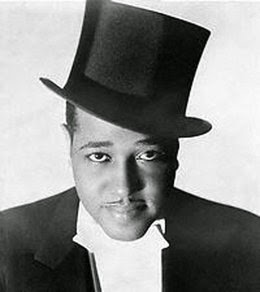 Taken from Medical News Today
Taken from Medical News Today
In the US and many Western countries, people are urged to manage “negative” feelings of anger or suffer its ill effects. But new research published in Psychological Science suggests that anger may actually be linked with better, not worse, health in certain cultures. The findings are based off research conducted with participants from the US and Japan.
“Many of us in Western societies naively believe that anger is bad for health, and beliefs like these appear to be bolstered by recent scientific findings,” says psychological scientist Shinobu Kitayama of the University of Michigan. “But our study suggests that the truism linking anger to ill health may be valid only within the cultural boundary of the ‘West,’ where anger functions as an index of frustration, poverty, low status and everything else that potentially compromises health.”
“These findings show how socio-cultural factors go under the skin to influence vital biological processes,” explains Kitayama.
In other words, it’s the circumstances that elicit anger, and not anger itself, that seem to be bad for health. In previous work, Kitayama and colleagues found that anger can function as a signal of high status and privilege in Asia — drawing on this, they hypothesized that greater expression of anger might be associated with better health among Asian participants.
To explore the link, the researchers examined data from American participants drawn from the Midlife in the United States (MIDUS) survey and data from Japanese participants drawn from the Midlife in Japan (MIDJA) survey.
To measure health, the researchers looked at biomarkers for inflammation and cardiovascular functioning, both of which have been linked to anger expression in previous research. The combination of these two factors served as a measure of overall biological health risk.
The researchers also looked at measures that gauged various aspects of anger, including how often participants expressed angry feelings through verbally or physically aggressive behaviors (e.g., “I slam doors,” “I say nasty things”).
The data revealed that greater anger expression was associated with increased biological health risk among American participants, as previous studies have shown.
But greater anger expression was associated with reduced biological health risk among Japanese participants. And the association was not explained by other potentially related factors — such as age, gender, chronic health conditions, smoking and alcohol consumption, social status, and experience of negative emotions more generally.
“The association between greater anger and compromised biological health, taken for granted in the current (Western) literature, was completely reversed so that greater anger was associated with better biological health among Japanese,” explains Kitayama.
The researchers did not find a link between other facets of anger, such as chronic propensity toward anger or the extent to which participants suppressed feelings of anger, and health outcomes.
Together, these findings suggest that the link between anger expression and health reflects different experiences across cultural contexts. In the US, expressing anger seems to reflect the degree to which people experience negative events, while in Japan it may reflect the degree to which people feel empowered and entitled.
“Our point is that anger expression is a complex phenomenon likely motivated by a variety of factors, many of which could be culture-specific. These cultural factors must be taken into account to achieve a full understanding of the link between anger and health,” the researchers write.
Kitayama and colleagues hope that future longitudinal research that follows participants over time will help to shed light on the relationship:
“Such research will help us address whether improving personal and social life styles so as to reduce anger may entail long-term health benefits.”
 Last year I discovered the work of Ken Burns. If that name is familiar it might be because of the notoriety he gained in the early 1990s with his PBS documentaries The Civil War and Baseball. I watched both and was fascinated! In addition to those I’ve passed considerable hours on the treadmill watching his documentaries on The West, The Dustbowl, Prohibition, The War (WWII), and most recently Jazz. In the Jazzdocumentary the famous musician Duke Ellington was interviewed and when asked about “the music of your people,” here is how he replied: “My people. Which of my people? I’m in several groups. I’m in the group of piano players. I’m in the group of listeners. I’m the group of people who have general appreciation of music. I’m in the group of those who aspire to be dilettantes. I’m in the group of those who attempt to produce something fit for the plateau. I had such a strong influence by the music of the people. The people, that’s the better word because the people are my people.”What struck me about Duke’s response was how he identified with so many different groups of people and how that undoubtedly allowed so many people to identify with him and his music. So often when we’re asked about ourselves we limit our view to a few defined and obvious categories. Much of that is defined by what we do (I’m a fireman, I’m in sales, etc.) or our role at home (mother, father, etc.). My question to you is this: Who are you? It’s important to understand for many reasons including when it comes to persuading others. That’s so because the more broadly you see yourself, the easier it will be to invoke the principle of liking. This principle of influence tells us people prefer to say, “Yes” to those they know and like. One way you can come to like one another person and have them come to like you is by sharing what you have in common.Here are a few ways I see myself: husband, father, son, brother, friend, businessman, salesman, influencer, trainer, coach, consultant, public speaker, reader, life-long learner, runner, weightlifter, martial artist, football fan, Ohio State Buckeye and Pittsburgh Steelers fan, Miami University and Dublin High School alumnus, Scotch lover, and child of God.As noted earlier, the more broadly I see myself the better my opportunity to connect with people because what we have in common (similarities) become starting points for relationships. Here are a few examples.When Ohio State beat #1 Alabama in the national championship semi-final, a game they were not expected to win, people were buzzing in Columbus. Everywhere you went it was a point of conversation and an easy way to talk to someone you didn’t know. I had a conversation with someone at a store that I can undoubtedly refer back to next time I see him.My wife, Jane, is from Pittsburgh and isn’t shy about talking to complete strangers about the Steelers when she sees them wearing some sports logoed item. You never know where a conversation may lead in terms of friendships or connections.When I do keynote presentations or conduct training sessions I regularly include influence stories about Jane and our daughter Abigail. Some people may not care how to influence others on the job but if they can get their spouse to take on a few more chores or get their kids to do their homework they’re all ears. Quite often people will talk to me afterwards about those personal stories, not business, because they see how persuasion can help on a personal level.I could give many more examples but you get the point. As human beings we’re all diverse and yet in our diversity we overlap with others in many more ways than we might have thought before. Duke Ellington clearly understood that and it’s a big reason his music was so well received by so many despite the racism he experienced during his lifetime. I encourage you to spend time thinking about who you are and the roles you have in life. That simple act could be enough for you to see more clearly what you have in common with someone else and might allow you to start forming a relationship through liking. And the good new is; if you need them to do something for you in the future, the more you’ve connected and bonded, the more they’ll like you and in turn will be more likely to say “Yes” to whatever you ask of them.
Last year I discovered the work of Ken Burns. If that name is familiar it might be because of the notoriety he gained in the early 1990s with his PBS documentaries The Civil War and Baseball. I watched both and was fascinated! In addition to those I’ve passed considerable hours on the treadmill watching his documentaries on The West, The Dustbowl, Prohibition, The War (WWII), and most recently Jazz. In the Jazzdocumentary the famous musician Duke Ellington was interviewed and when asked about “the music of your people,” here is how he replied: “My people. Which of my people? I’m in several groups. I’m in the group of piano players. I’m in the group of listeners. I’m the group of people who have general appreciation of music. I’m in the group of those who aspire to be dilettantes. I’m in the group of those who attempt to produce something fit for the plateau. I had such a strong influence by the music of the people. The people, that’s the better word because the people are my people.”What struck me about Duke’s response was how he identified with so many different groups of people and how that undoubtedly allowed so many people to identify with him and his music. So often when we’re asked about ourselves we limit our view to a few defined and obvious categories. Much of that is defined by what we do (I’m a fireman, I’m in sales, etc.) or our role at home (mother, father, etc.). My question to you is this: Who are you? It’s important to understand for many reasons including when it comes to persuading others. That’s so because the more broadly you see yourself, the easier it will be to invoke the principle of liking. This principle of influence tells us people prefer to say, “Yes” to those they know and like. One way you can come to like one another person and have them come to like you is by sharing what you have in common.Here are a few ways I see myself: husband, father, son, brother, friend, businessman, salesman, influencer, trainer, coach, consultant, public speaker, reader, life-long learner, runner, weightlifter, martial artist, football fan, Ohio State Buckeye and Pittsburgh Steelers fan, Miami University and Dublin High School alumnus, Scotch lover, and child of God.As noted earlier, the more broadly I see myself the better my opportunity to connect with people because what we have in common (similarities) become starting points for relationships. Here are a few examples.When Ohio State beat #1 Alabama in the national championship semi-final, a game they were not expected to win, people were buzzing in Columbus. Everywhere you went it was a point of conversation and an easy way to talk to someone you didn’t know. I had a conversation with someone at a store that I can undoubtedly refer back to next time I see him.My wife, Jane, is from Pittsburgh and isn’t shy about talking to complete strangers about the Steelers when she sees them wearing some sports logoed item. You never know where a conversation may lead in terms of friendships or connections.When I do keynote presentations or conduct training sessions I regularly include influence stories about Jane and our daughter Abigail. Some people may not care how to influence others on the job but if they can get their spouse to take on a few more chores or get their kids to do their homework they’re all ears. Quite often people will talk to me afterwards about those personal stories, not business, because they see how persuasion can help on a personal level.I could give many more examples but you get the point. As human beings we’re all diverse and yet in our diversity we overlap with others in many more ways than we might have thought before. Duke Ellington clearly understood that and it’s a big reason his music was so well received by so many despite the racism he experienced during his lifetime. I encourage you to spend time thinking about who you are and the roles you have in life. That simple act could be enough for you to see more clearly what you have in common with someone else and might allow you to start forming a relationship through liking. And the good new is; if you need them to do something for you in the future, the more you’ve connected and bonded, the more they’ll like you and in turn will be more likely to say “Yes” to whatever you ask of them. Brian Ahearn, CMCT® Chief Influence OfficerinfluencePEOPLE Helping You Learn to Hear “Yes”.
Brian Ahearn, CMCT® Chief Influence OfficerinfluencePEOPLE Helping You Learn to Hear “Yes”. New research, published in Organisational Behavior and Human Decision Processes, suggest feelings of disgust lead to increases in deceitful behavior that would benefit the self.
New research, published in Organisational Behavior and Human Decision Processes, suggest feelings of disgust lead to increases in deceitful behavior that would benefit the self.